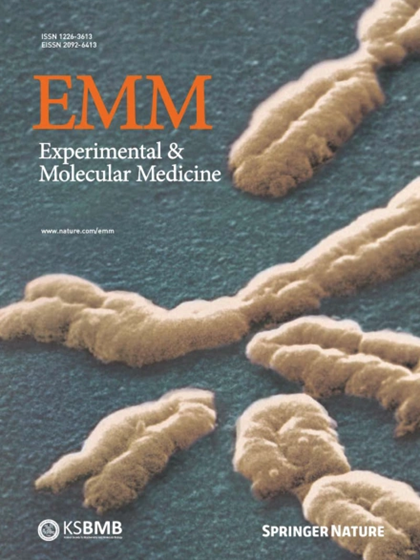Pancreatic organogenesis mapped through space and time
IF 9.5
2区 医学
Q1 BIOCHEMISTRY & MOLECULAR BIOLOGY
引用次数: 0
Abstract
The spatial organization of cells within a tissue is dictated throughout dynamic developmental processes. We sought to understand whether cells geometrically coordinate with one another throughout development to achieve their organization. The pancreas is a complex cellular organ with a particular spatial organization. Signals from the mesenchyme, neurons, and endothelial cells instruct epithelial cell differentiation during pancreatic development. To understand the cellular diversity and spatial organization of the developing pancreatic niche, we mapped the spatial relationships between single cells over time. We found that four transcriptionally unique subtypes of mesenchyme in the developing pancreas spatially coordinate throughout development, with each subtype at fixed locations in space and time in relation to other cells, including beta cells, vasculature, and epithelial cells. Our work provides insight into the mechanisms of pancreatic development by showing that cells are organized in a space and time manner. This study explores how different types of cells, called mesenchyme, help form the pancreas during development. Researchers used various techniques to study mouse embryos and human fetal tissue. They identified several subtypes of mesenchyme in the developing pancreas and found that these subtypes are not randomly distributed; instead, they occupy specific locations. The study involved analyzing single-cell RNA sequencing data (a method to study gene expression in individual cells) and using advanced imaging techniques to map the positions of these cells. The researchers discovered that different mesenchyme subtypes have unique roles, such as supporting blood vessel formation or nerve development. These findings suggest that understanding mesenchyme organization could improve regenerative medicine approaches for diseases like diabetes. Future research may explore how these cells interact with other pancreatic components over time. This summary was initially drafted using artificial intelligence, then revised and fact-checked by the author.

通过空间和时间绘制胰腺器官发生图。
组织内细胞的空间组织是由整个动态发育过程决定的。我们试图了解细胞在整个发展过程中是否在几何上相互协调以实现其组织。胰腺是一个具有特殊空间结构的复杂细胞器官。在胰腺发育过程中,来自间质、神经元和内皮细胞的信号指导上皮细胞的分化。为了了解发育中的胰腺生态位的细胞多样性和空间组织,我们绘制了单个细胞之间随时间的空间关系。我们发现发育中的胰腺中四种转录独特的间充质亚型在整个发育过程中在空间上协调一致,每种亚型与其他细胞(包括β细胞、脉管系统和上皮细胞)在空间和时间上处于固定位置。我们的工作通过显示细胞以空间和时间方式组织,为胰腺发育机制提供了见解。
本文章由计算机程序翻译,如有差异,请以英文原文为准。
求助全文
约1分钟内获得全文
求助全文
来源期刊

Experimental and Molecular Medicine
医学-生化与分子生物学
CiteScore
19.50
自引率
0.80%
发文量
166
审稿时长
3 months
期刊介绍:
Experimental & Molecular Medicine (EMM) stands as Korea's pioneering biochemistry journal, established in 1964 and rejuvenated in 1996 as an Open Access, fully peer-reviewed international journal. Dedicated to advancing translational research and showcasing recent breakthroughs in the biomedical realm, EMM invites submissions encompassing genetic, molecular, and cellular studies of human physiology and diseases. Emphasizing the correlation between experimental and translational research and enhanced clinical benefits, the journal actively encourages contributions employing specific molecular tools. Welcoming studies that bridge basic discoveries with clinical relevance, alongside articles demonstrating clear in vivo significance and novelty, Experimental & Molecular Medicine proudly serves as an open-access, online-only repository of cutting-edge medical research.
 求助内容:
求助内容: 应助结果提醒方式:
应助结果提醒方式:


